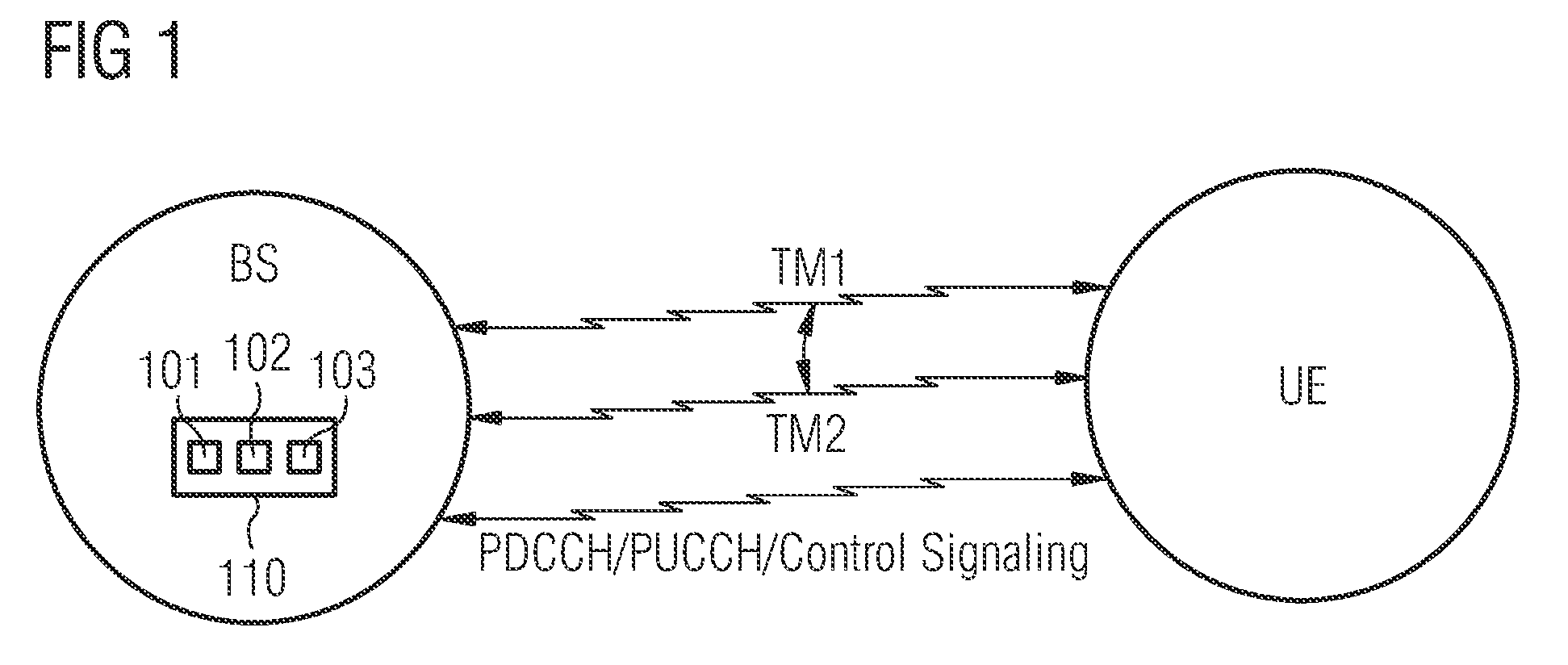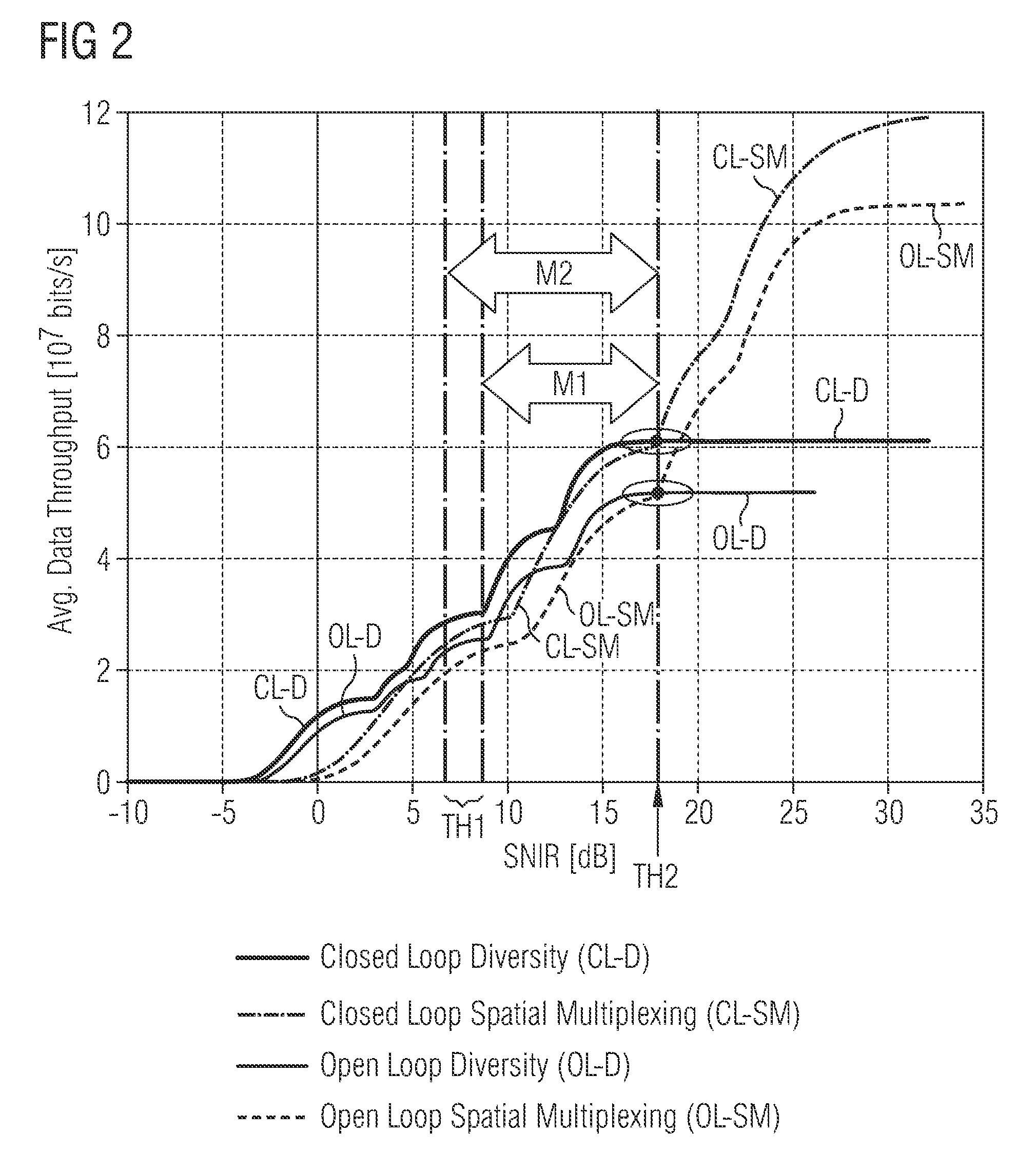Transmission mode selection based on radio link quality and radio load on the air interface
a radio link quality and radio load technology, applied in adaptive control, wireless commuication services, instruments, etc., can solve the problems of high inefficiency of cl double codeword transmission, severe impact on the total capacity of the telecommunication network, and limited performance of the whole telecommunication system, so as to reduce keep the probability of data loss small , the effect of slow rrc transmission mode reconfiguration
- Summary
- Abstract
- Description
- Claims
- Application Information
AI Technical Summary
Benefits of technology
Problems solved by technology
Method used
Image
Examples
Embodiment Construction
[0065]It should be noted that the term “comprising” does not exclude other elements or steps and “a” or “an” does not exclude a plurality. Also elements described in association with different embodiments may be combined. It should also be noted that reference signs in the claims should not be construed as limiting the scope of the claims.
[0066]FIG. 1 shows in a schematic representation a radio link extending between a base station BS and a user equipment UE. For transmitting data between the BS and the UE two different transmission modes, a first transmission mode TM1 and a second transmission mode TM2, can be used.
[0067]The base station BS comprises a control device 110. The control device 110 comprises a first determining unit 111 for determining the actual quality of the radio link and a second determining unit 112 for determining the radio load in a non depicted telecommunication network cell, to which the base station BS and the user equipment UE are assigned to. The control d...
PUM
 Login to View More
Login to View More Abstract
Description
Claims
Application Information
 Login to View More
Login to View More - R&D
- Intellectual Property
- Life Sciences
- Materials
- Tech Scout
- Unparalleled Data Quality
- Higher Quality Content
- 60% Fewer Hallucinations
Browse by: Latest US Patents, China's latest patents, Technical Efficacy Thesaurus, Application Domain, Technology Topic, Popular Technical Reports.
© 2025 PatSnap. All rights reserved.Legal|Privacy policy|Modern Slavery Act Transparency Statement|Sitemap|About US| Contact US: help@patsnap.com



